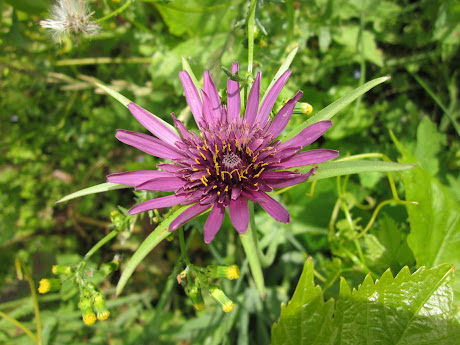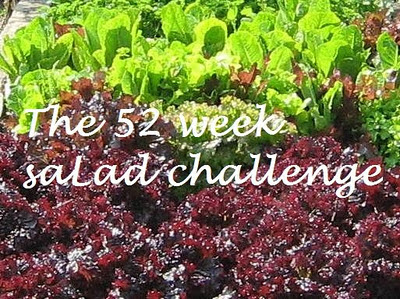The Birdwatcher's Garden

This is the weekend where we all dust off our binoculars, top up the bird feeders and complete our RSPB Garden Birdwatch survey. I'll be doing mine as soon as I've finished this post: I couldn't yesterday as I was in Oxford and I do seem to have picked the better day because it's beautifully bright and sunny :)
Many of us will probably need to consult one of the many identification books available today. However, I've also been enjoying reading my copy of The Birdwatcher's Garden this week, which I won in a Twitter competition (courtesy of @GardenAnswers) just before Christmas.
It's a very timely book for me because my thoughts are turning towards how I can make my garden more attractive to wildlife as I'm redesigning a couple of my borders. This book is perfect for this as it contains lots of information on which trees, shrubs and other plants are the most attractive to the widest variety of birds. Not only that, the tables of information are broken down by species, so I can make sure I have plenty of plants which are attractive to the birds I've seen in my neighbourhood.
The first part of the book is all about understanding what a bird needs from a garden. It's not only about plants for food or shelter, it's also roosting sites and providing good observation posts. The concept of wildlife corridors and a garden's role in this is also explained, as well as how a bird-friendly garden is ultimately good for all the creatures which are needed to support them.
There then follows a section on the key needs for breeding and feeding. After a general look at bird territory, nesting materials and sites plus the key influences on breeding and feeding, there's a bird-by-bird guide to what individual species need. The list of birds included is much wider than I expected and reflects the wide variety of garden locations and sizes we have.
The next section is on gardening techniques and the types of plants to grow to encourage birds. Here there's a special consideration for small town gardens, balconies and patios. This is swiftly followed by man-made provisions. This is probably the aspect most of us focus on, but forms a relatively small part of the book. It includes the expected supplementary feeders and how to make a nest box, but also looks at how to make a pond or bog garden to widen the variety of habitats available for birds.
Conservation is considered next which includes meadows and introduces the concept of a 'wildlife lawn'. This is not being too precious about lawn weeds, but understanding their value for birds (Ha - I've got one already!). Guidance on environmentally friendly pest control is given alongside some of the choices gardeners can make to conserve habitats elsewhere, particularly peat bogs and limestone pavements.
The last chapter is called The Birdwatcher's Year and looks at seasonal visitors, behavioural changes and the key events through the seasons. Throughout the book there's birdwatcher's tips clearly highlighted to supplement this chapter. There's also plenty of birdlife photography throughout.
This book is an updated version of one first published in 1999. It's clear it's based on sound observation and research conducted by organisations such as the BTO and The Wildlife Trusts, presented in a very readable way to help keen garden birdwatchers to do more for our feathered friends. It may be over 10 years old, but this is the kind of book which perhaps is needed even more today.
Birdwatch update: Wood pigeon 2, Robin, Blackbird, Herring Gull, Blue Tit, Blackcap, Chaffinch, Coal Tit, Crow (all 1), Great Tit 2 and Dunnock 1. Fewer species this year and not such great numbers as I usually get on a sunny day. The blackcap was a BIG bonus though :)










We shall be joining in with the Birdwatch, today, as well. Last year, our most interesting bird visitors did not appear in our chosen hour; but I understand that their absence also contributes valuable data. This year we have provided more feeding opportunities and I can often count a dozen blackbirds feeding on the lawn, along with smaller birds flitting about and disappearing into the trees and bushes. I think that counting everything accurately is going to be a bit of a challenge!
ReplyDeleteYour book looks and sounds most useful (lovely photos), if a bit on the expensive side for some pockets. I wonder what Jeremy Biggs (http://thegardenpondblog.org.uk/) would think of the pond making advice - I have found dipping into his blog very thought provoking.
Hurray! We now have some sunshine, too!
Hi Mags,
ReplyDeleteI've seen some interesting blackbird behaviour recently. At least 1 male has been hovering at my neighbours fat cake feeder to get at what's inside. As you know they're more suited to ground feeding, so I'm wondering if this is a sign of desperation following our hard winter or recent frosts.
I'd recommend this book to anyone: there's always the library for those who can't afford it. I'm using my library much more these days and it's so much more important to do so now.
I know Jeremy's work very well from when I worked in Oxford and as a freshwater biologist myself. It's always good to see someone who takes notice of his advice. Thanks very much for pointing out his blog to those who might not be aware of it already :)
What a great prize to win. Thanks for the review VP and I will keep my eyes open for this title in the
ReplyDeletelibrary /bookshops. Have just done the Birdwatch survey ~ amazing how a regular daily visitor did not make an appearance - it happens every year!
I have just done the Garden Birdwatch. I am sure the birds know it is on because they either stay away or arrive in a rush at the end to make counting more difficult.
ReplyDeleteNever mind...the 3 Squirrels enjoyed the extra food I put out :-)
You're right about the library - good point!
ReplyDeleteI'm so interested to learn that you are a freshwater biologist... I live close to the River Waveney and I often wish I knew more about river ecology. A neighbour shocked me just the other day by informing me that there are too many otters! I am, personally, delighted that otter numbers have increased and that our now cleaner rivers can suport them; but my neighbour (who is a fisherman) told me that there needs to be a cull. Surely we are not so overrun that Nature cannot take care of the balance by herself...?
Wandered off topic a bit, here!
Anna - sadly no big flocks of chattering greenfich nor long tailed tits and my regular wren didn't make an apearance, nor did the songthrush, but I'm very pleased to see the blackcap.
ReplyDeleteEG - I'm in shock - no squirrels invaded the pitch this time :o
Mag - too many otters + talking to a fisherman? There may be a connection! Wandering off topic is fine :)
PS A cleaner river also = more fish
ReplyDeleteI hadn't realised it was garden birdwatch weekend, so thanks for the reminder. that book sounds brill.I haven't come across it before, may have to have a look for it next time I'm in Waterstones. i sympathise with easygardener above who notes that the best birds always stay awin in your designated hour!
ReplyDeleteThat looks to be a good book which I shall look out for.
ReplyDeleteI did my count this morning and was surprised, and delighted, to see my first ever male blackcap!
Flighty xx
I enjoyed this post very much! We filled all our bird feeders this weekend....and woke to a symphony of birdsong here in North Texas this morning! We enjoy bird watching from our front porch and also from the gazebo in the back yard. We are a registered 'Back Yard Habitat' and have kept a journal of the birds we have seen for many years!
ReplyDeleteDidn't know about this - I have a list from my garden this month - all of yours plus a goldfinch, tree sparrow, long tailed tit, collared dove, thrush, blackbird - and a woodpecker that I can hear but haven't seen.
ReplyDeleteToday I was at St Davids head - two choughs just walking round as if it were their garden, which I guess it is
Hi VP, that sounds like a really excellent book, and one that would remain relevant for the long term too, always a bonus. I have some birthday money left and this has definitely just made the shortlist, so thank you!
ReplyDeleteHaving said all that, to my shame, I completely forgot to do the birdwatch survey this year.
My garden has been ridded of birds by our cats. Now birds are beginning to be more active (not sure they are meant to be twittering spring yet - but some are) the cats are reeking indoor destruction too by scrabbling around on window sills, trying to get to them.
ReplyDeleteHowever, tree sparrows have started to sit in our Spanish Broom (instead of the 'ordinary ones' which nest in our eaves every year).
There was a wren a couple of weeks ago, scuttling around under the foxglove leaves.
The book sounds good.
Esther
P.S. Reading the comments here, I think I can see why regular garden visitors don't turn up on birdwatch weekends. If people put out extra food to tempt birds in to be counted, their behaviour in a neighbourhood is likely to be distorted - maybe they are checking out new dining places. Is this, perhaps, something which needs to be addressed?
TCGF - the same happened for me - the garden's had flocks of birds flying around every day and none of them appeared during my hour. My lovely little wren stayed away too :(
ReplyDeleteFlightplot - I'm really pleased to see the blackcaps back this year. A pair have been foraging just a few feet away from the patio doors. Absolutely magical.
Linda - welcome! No doubt you'll be taking part in the American equivalent in the next few weeks? I don't keep a journal, but I do have a list of what's been visiting :)
Mark - I've had a gorgeous little goldcrest, but not a peep on Sunday. The song thrush has been warbling away for the past few weeks, but I didn't even hear it on the day. I love long tailed tits - we usually get a cheeky chattering little flock come through the garden. I'm worried that December's cold has decimated them.
Plantiliscious - I hope you enjoy the book :)
Esther - the birds have been twittering spring here for a while now and potential nesting sites are being investigated very thoroughly. Looks like Mr and Mrs Robin will be returning to the conifer tree by the kitchen window this year :)